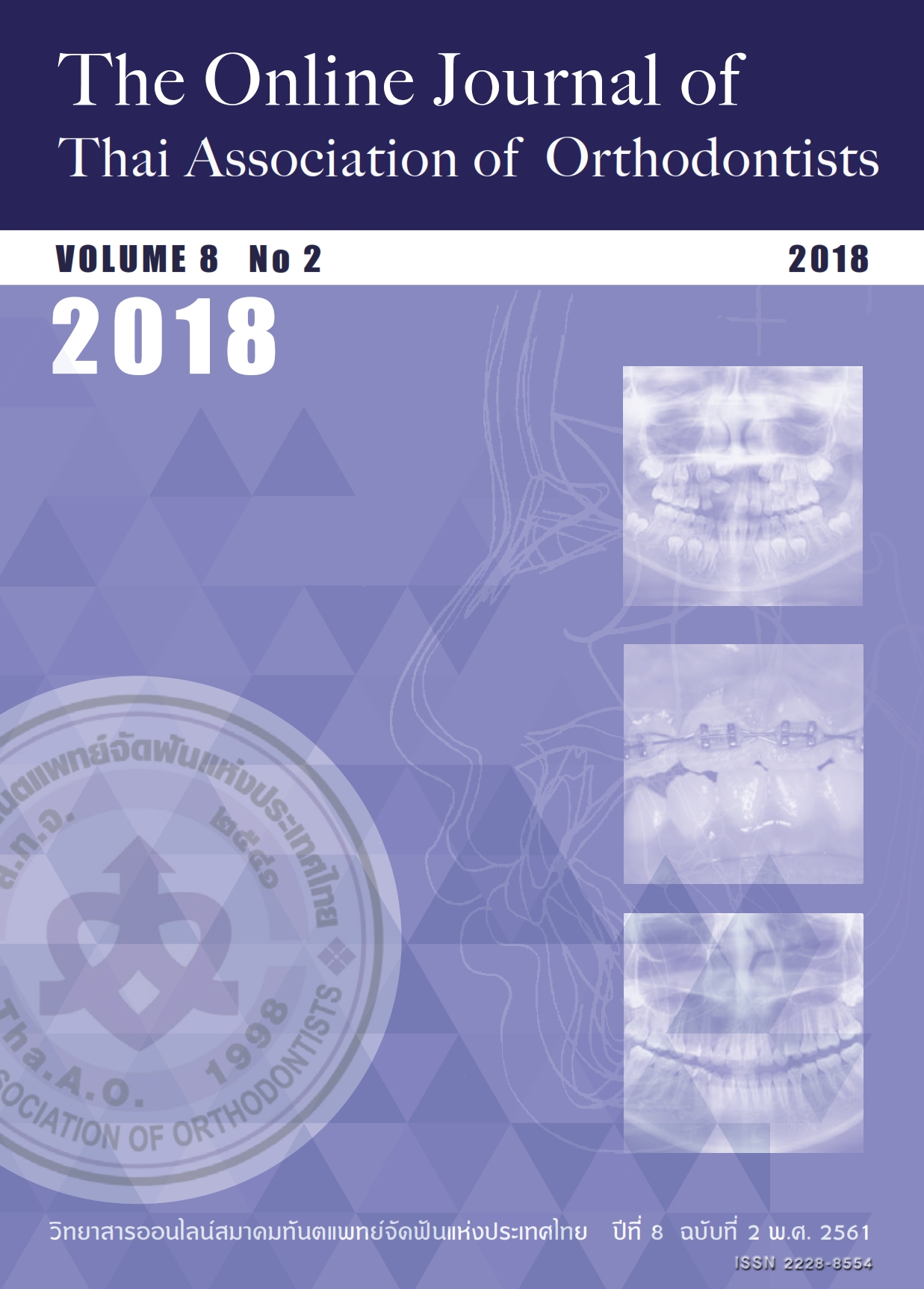Comparison of Class II Malocclusion Characteristics
Main Article Content
Abstract
Patients with class II malocclusion were one of the most common patients seeking for orthodontic treatment. Diagnosis of class II malocclusion normally based on upper and lower molar’s relationship according to Angle’s Classification. This method appeared to be simple and convenient for clinical evaluation focusing only on the relationship between mesio-buccal cusp of upper first molar and buccal groove of lower first molar. Upper incisors inclination and overjet were also used for diagnosis. Angle’s class II can be divided into 2 divisions which are class II division 1 demonstrating upper incisors proclination with increased overjet and class II division 2 demonstrating upper incisors retroclination with decreased overjet. According to several studies, Angle’s classification had some limitations influencing inadequate data for treatment planning. Not only normal variation between individuals, but also some pathognomonic characteristics of class II malocclusion that had been neglected.
The objective of this article is to present and compare characteristics of class II malocclusion in all 3 components; skeletal, dentoalveolar and soft tissues ; being a guideline for further individualized treatment planning.
Article Details

This work is licensed under a Creative Commons Attribution-NonCommercial-NoDerivatives 4.0 International License.


